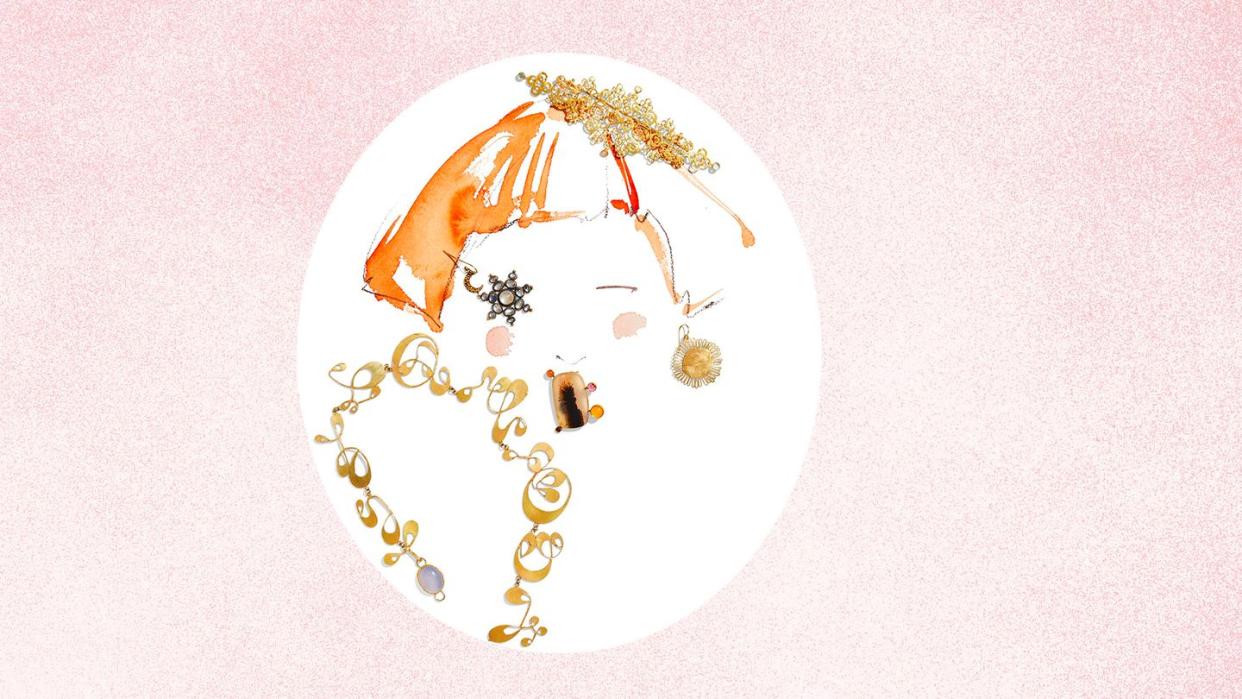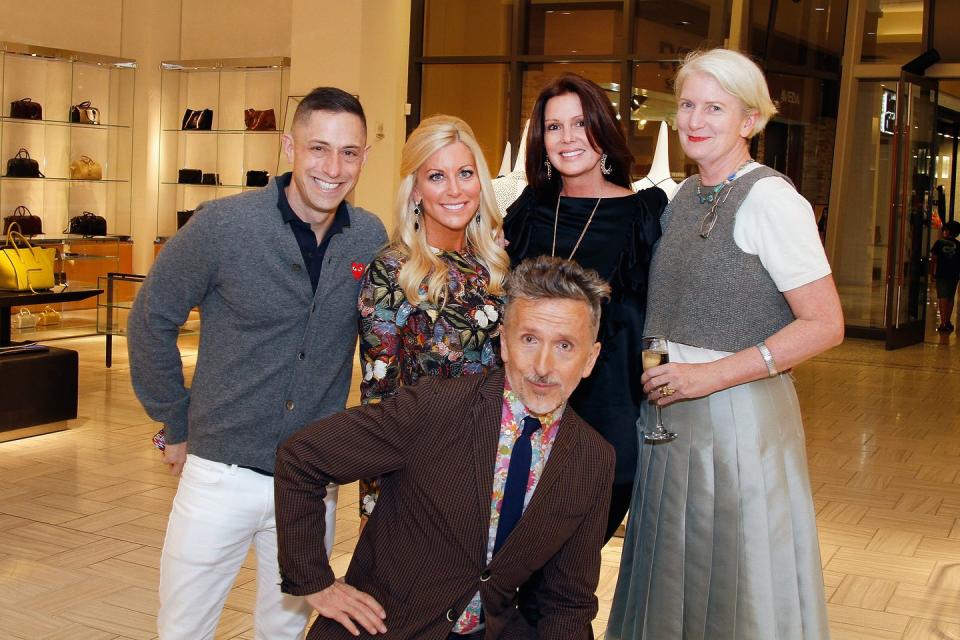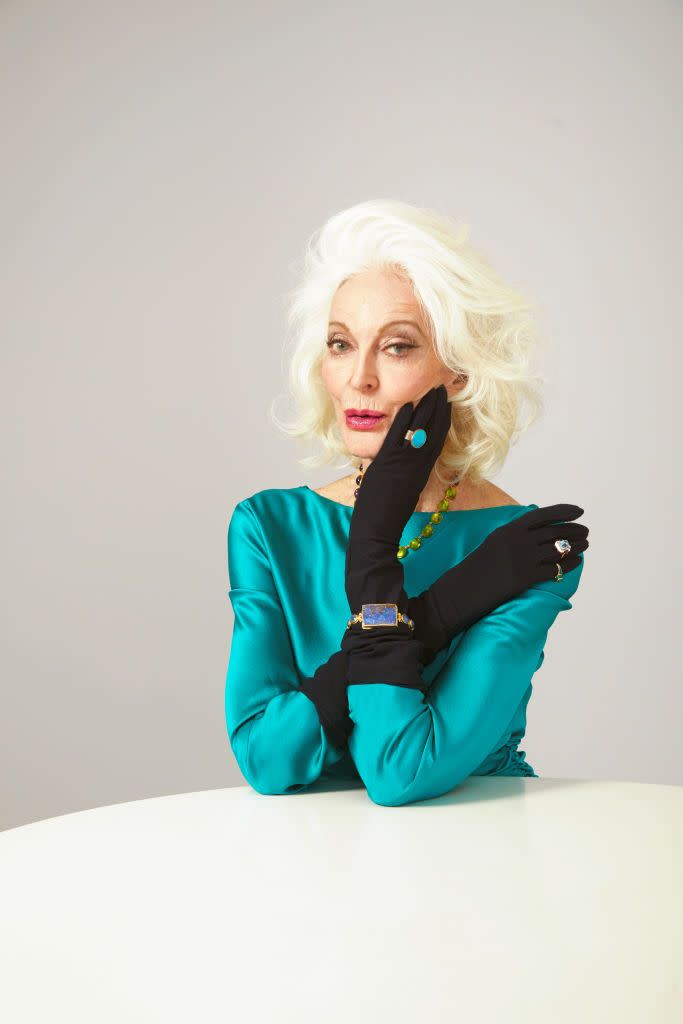All Eyes on Judy Geib

“I’m getting ready to make a long cartoon character necklace in gold with stones interspersed—for myself!” Judy Geib tells me when I visit her jewelry atelier, a vast, crammed space in Williamsburg, Brooklyn, that was once an air conditioner factory.
Who else would contemplate employing the finest materials in the service of Foghorn Leghorn, the Tasmanian Devil, and Bugs Bunny? Geib’s startling inventiveness has captivated her audience, a veritable cult, since she made her first piece, a pair of opal earrings with surprising enamel backs, in 1996.
I became a loyal member of this coterie when I first encountered her work at the late, lamented Barneys—it was a necklace of twisted flat letters, a nutty calligraphy in 22K gold and cabochon rubies. It fairly leaped out of the case at me, and though its price prohibited me from hanging this alphabet around my neck, I never forgot it.
Geib’s work reminds me of Thelonious Monk, say, or Jackson Pollock—artists who engaged the world in a passionate and utterly new way. At a time when more and more jewelry—even when it is admittedly very beautiful—feels as if it were designed by committee, Geib’s work seems so right, right now, for its refusal to be mass produced or mass marketed. And isn’t this what defines luxury in this over-saturated age—a desire to locate something really special that carries the spirit of the human hand that crafted it?

I am not alone in my enthusiasm. Rick Van Streain Low, the co-designer of the young fine jewelry line EN Studio, describes Geib as “a real jeweler’s jeweler. She’s a great lesson in following your intuition.” With distinctive personalities in such short supply these days, he is inspired by her bravery. Though her work is rendered in the most rarefied materials, “she is also so zany sometimes.”
Geib hardly came up the normal way. She was working as a graphic designer for an architect and became obsessed with antique jewelry, but she couldn’t afford what she wanted (sound familiar?), so she undertook to make some pieces herself. Entirely untrained, she relied on a vintage book called Jewelry Making for Schools, Tradesmen, Craftsmen to teach herself the rudiments. She was such a greenhorn that once, when she was cruising the aisles at the Strand bookstore looking for books about stones, she struck up a conversation with a guy who told her about a gem show at a Holiday Inn. Now she gets her raw materials from all over the world: aquamarines and pink tourmalines from Brazil, agates from Mexico, emeralds from Colombia. She once took a 17-hour bus trip in Brazil to procure some stones; she swears this was fun.

Geib has pale, pixieish hair held with a sterling headband. For Halloween she wore one with a star on top, like a beatnik Glinda the Good Witch. When we meet she is sporting a necklace of spectacular rough emeralds that devolves into a row of what she calls “squash,” which approximately translates as little circles made from flattened gold leftovers and more often than not fashioned into -flowers. Her Comme des Gar?ons frock is topped with a vest she knitted herself. Not only does she make a lot of her own clothes, she even crochets the packages for her jewelry. On a worktable a dazzling 18K Peter Pan collar made of squash is nestled in its own woolly, tangerine--colored home.
We’re sipping turmeric tea sent by Geib’s dendritic agate dealer and perusing a table full of treasures: charmingly lopsided earrings that drip moonstones and pink tourmalines; a necklace that offers a central faceted ruby surrounded by a gold girdle that Geib says spells out “Fiery Aglow.”
“Any whales today?” I ask her (she once did a series of exquisite if wacky whale pieces, an homage to her favorite novel, Moby Dick, which she rereads every year). The answer is no, but there is a giant seashell necklace backed in silver with the words “I carry the sound of the ocean inside me” engraved on the back.
And what are these, I ask about two glass jars with silver lids studded with pavé diamonds. You don’t see these every day! They are former jam containers, now brandishing bejeweled tops, their existence offering further proof that Geib is an artist who lives her work, whose fierce aesthetic informs even her most prosaic activities. “I use them,” she confesses with a laugh, “to carry my lunch.”
This story appears in the March 2024 issue of Town & Country. SUBSCRIBE NOW
You Might Also Like
